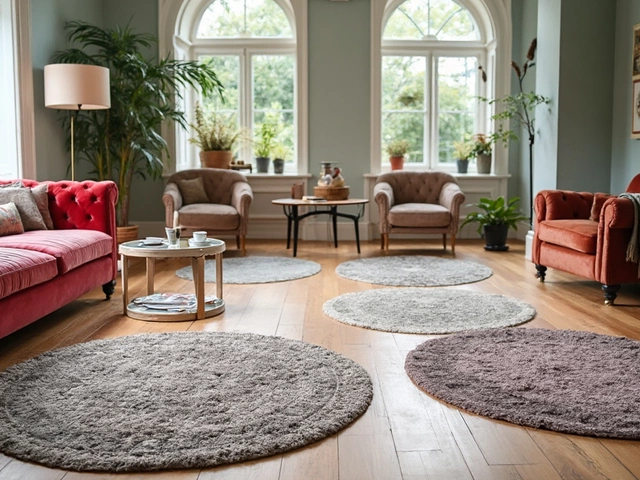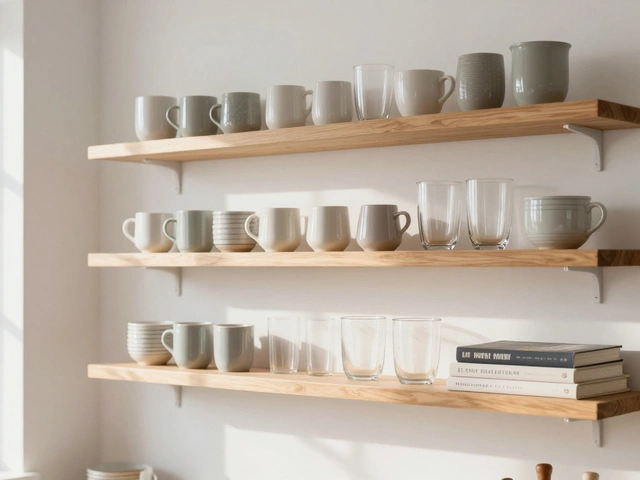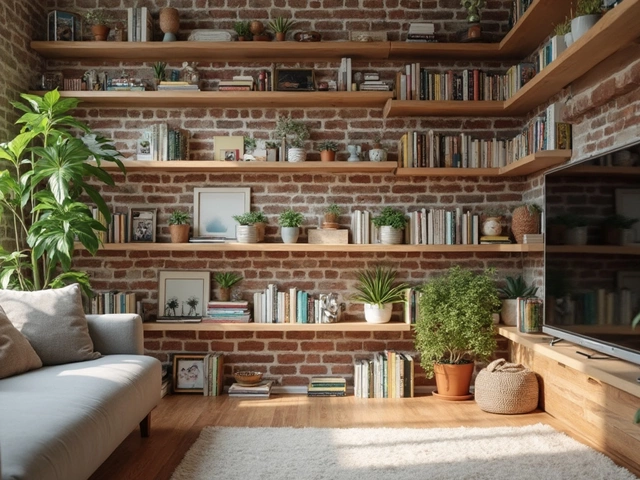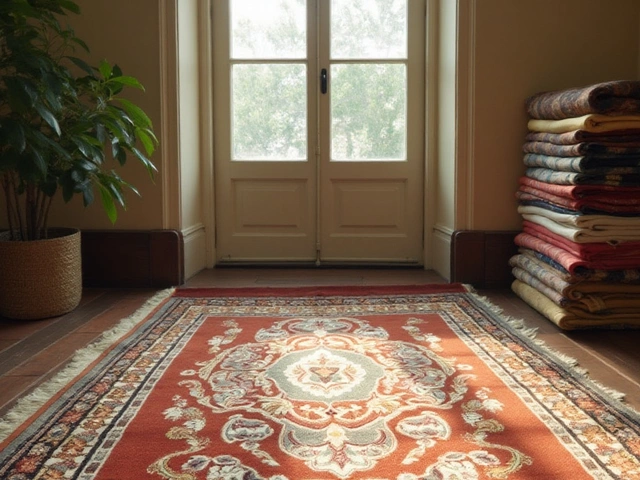Choosing the Perfect Curtain Color for White Walls
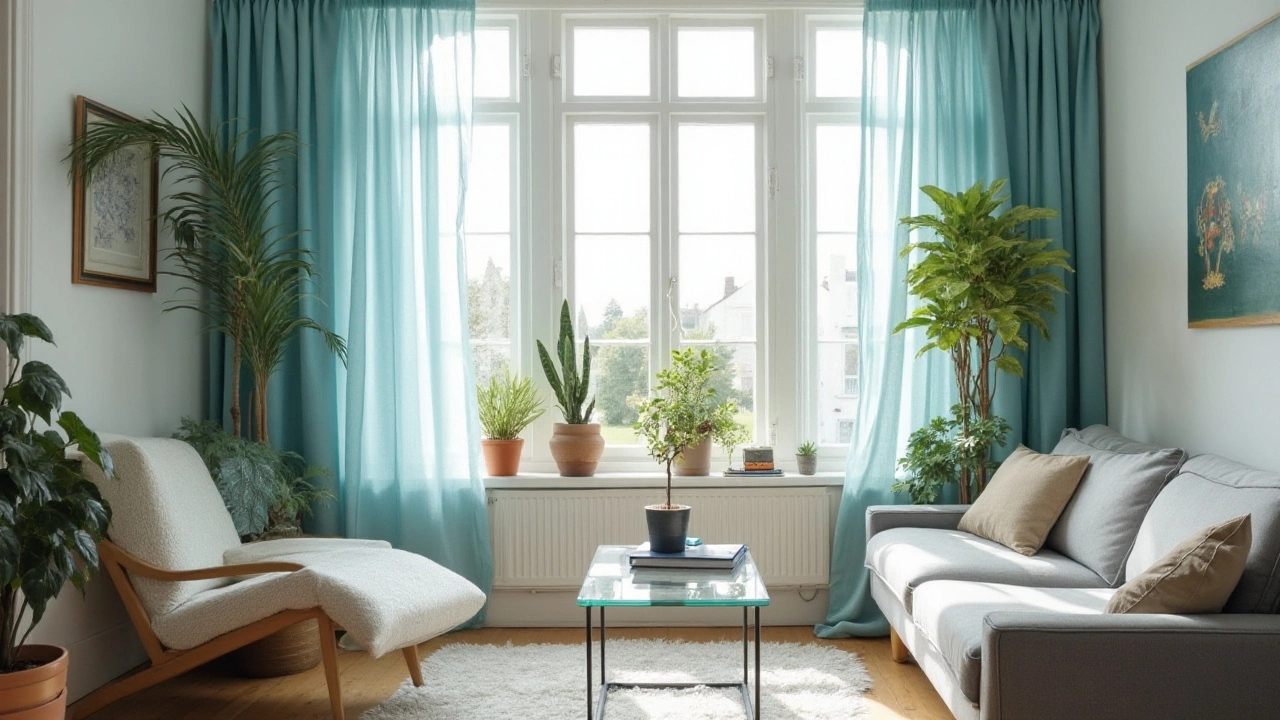
Curtains, though often overlooked, can transform the ambiance of any room. For homes with white walls, choosing the appropriate curtain color becomes even more crucial, as it adds a layer of depth and personality.
The neutrality of white walls offers a blank canvas, allowing for a wide range of curtain color options—from bold and dramatic hues to soft and muted tones. Color choices can alter the mood of a room, making it feel more spacious, cozy, or lively.
In this guide, we'll unravel the mystery of selecting the perfect curtain color for your white-walled room, ensuring that every choice made enhances the space while reflecting your personal style. Dive into the world of home decor and discover how a simple curtain swap can breathe new life into your living space.
- Understanding the Role of Curtains in Home Decor
- Exploring Color Psychology with Curtains
- Popular Curtain Color Choices for White Walls
- Tips for Matching Curtains with Different Room Elements
- Personalizing Your Space with Unique Curtain Styles
Understanding the Role of Curtains in Home Decor
When decorating a home, curtains are an integral element that should not be overlooked. They serve as a multi-functional asset to your living spaces, providing both utilitarian and aesthetic benefits. First and foremost, curtains are essential for managing light in a room. Depending on the fabric and color of the curtains, they can either block harsh sunlight, providing a cooling effect, or allow natural light to enhance the ambiance of the room. Having control over the lighting can dramatically affect the mood and function of any space. Moreover, curtains offer privacy, which is vital for personal comfort and security. They can shield the interior from prying eyes while still allowing you to enjoy your space in peace.
Beyond these practical functions, curtains are powerful tools for enhancing the aesthetics of any room. When paired effectively with white walls, curtains can introduce pops of color, texture, and patterns that reflect personal style and taste. They can serve as a focal point, drawing attention to a particular part of the room, or subtly blend into the background, lending a cohesive look to the interior decor. The fabric’s texture can also contribute significantly to the room’s style; for instance, silk or velvet curtains can add a touch of luxury, while linen or cotton offers a more casual and relaxed feel. The choice of curtain color not only complements the interior design but can also influence how warm or cool the space appears, impacting the perception of space.
According to the interior design expert Sophie Robinson,
"Curtains are like the eyelashes of a room; they help to frame the room beautifully and add that finishing touch. Just as lashes can be dramatic or subtle, curtains should reflect the mood you want to create."This analogy underscores the transformational power that curtains hold. In small spaces, lightly colored curtains can make a room feel larger and more open, while darker shades can provide a cocooning effect, making expansive spaces feel cozier.
Understanding the material and its care requirements is crucial as well. Some curtains require dry cleaning, which may be an extra cost to consider, while others, like polyester blends, can be easily machine-washed. Also, certain fabrics fade in prolonged sunlight, which should be a consideration for rooms that receive a lot of direct sunlight. Additional features such as thermal or blackout linings can enhance the curtains' energy efficiency and are worth exploring if you aim to save on heating or cooling costs.
In summary, the choice of curtains extends far beyond aesthetic preferences. It's a blend of style, function, and individual needs. Those considering new window treatments should weigh factors such as light control, privacy, room design, and even maintenance issues. By understanding these layers of functionality and style, choosing the right curtains becomes a thoughtful element of your home decor strategy.
Exploring Color Psychology with Curtains
Color has fascinating psychological effects on us, shaping our emotions and even our behaviors, making it crucial to consider these implications when choosing curtain colors for white-walled rooms. For instance, blue is often linked with tranquility and calmness, qualities you'd want in a bedroom for a relaxing atmosphere. Shades of blue can range from soft sky blues, which are perfect for invoking serenity, to deep navy for a more sophisticated and formal appeal. On the other hand, if you're looking to enhance energy and creativity in a space like a home office, vibrant hues such as yellows or oranges could be ideal; these colors are known to stimulate the brain and inspire innovative thoughts.
Conversely, certain colors can have less desirable effects if overused. Red, a bold choice for some, symbolizes energy and passion, yet in abundance, it might overwhelm and create tension, especially in spaces meant for relaxation like living rooms. However, when used as a focal point or accent, red curtains against white walls can add an exciting touch without dominating the room. Greens, on the opposite spectrum, are universally accepted as calming and are associated with nature. They work well in any living space promoting both peace and balance, thus verdant drapery can seamlessly blend in with diverse interior styles.
It's interesting to note how personal preferences intertwine with cultural associations of colors. In many cultures, purple is seen as a color of luxury and creativity, used to indulge one's sense of imagination. Adding purple curtains can enrich a room's atmosphere, making it feel more opulent and inspired. According to Color Psychology's expert Karen Haller:
"Color can have an enormous impact, not only on the building and interior space but also on an individual’s mind and emotions."Considering these aspects ensures your curtain choices not only align with desired aesthetics but also enhance the space's intended function.
To pull all these elements together, it might be helpful to brainstorm how you want each space to feel and function. If soothing greens fit the theme, varying between mint and olive green shades can add layers of depth and interest without straying from the calming essence. You might want to introduce pops of energy through smaller accents or seasonal changes to avoid a monotonous scheme that's overly one-note. Ultimately, the right curtain color for your white walls should amplify the mood you wish to cultivate, offering a personalized touch that reflects who you are and how you live.
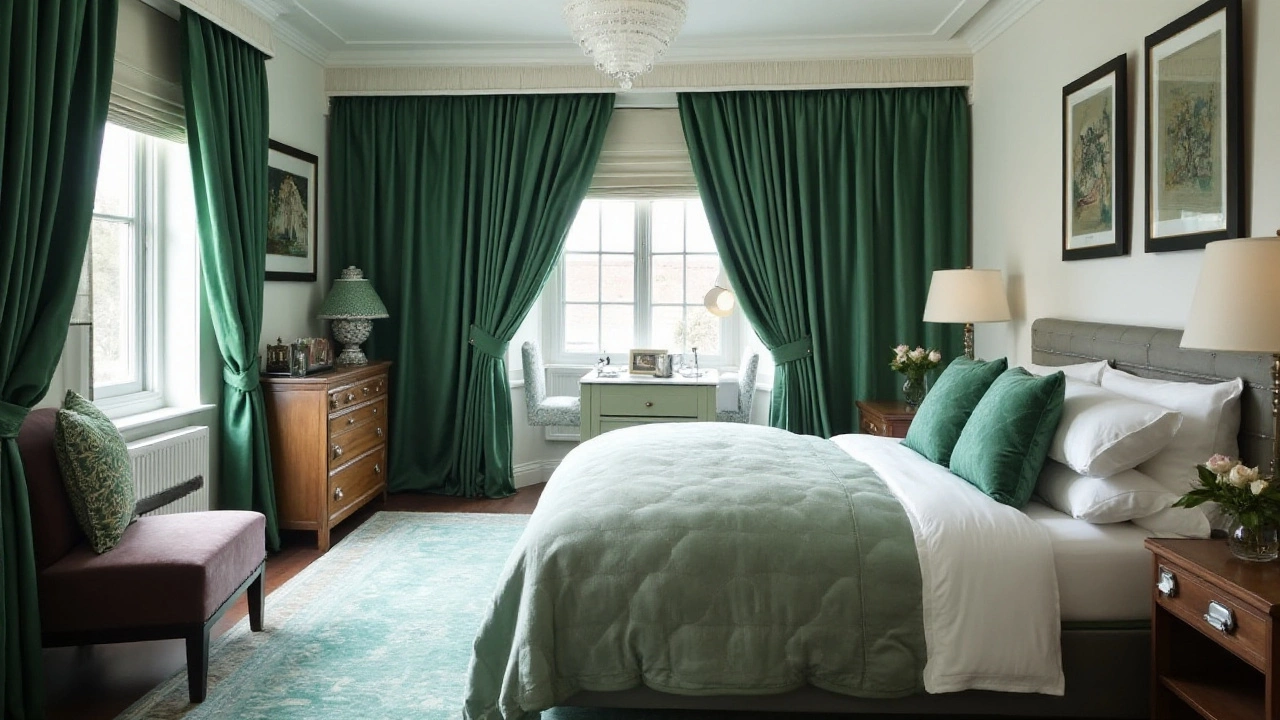
Popular Curtain Color Choices for White Walls
When your walls are painted a pristine white, a world of possibilities opens up with curtain colors. The starkness of white creates a background that can either be subtly enhanced by neutral tones or dramatically contrasted with bold colors. A classic choice, neutral tones like beige, taupe, and grey can bring a sense of tranquility and sophistication to any room. These soft hues blend seamlessly without overpowering the space, making them ideal for a minimalist aesthetic. Neutral curtains can inject warmth and texture into the room, especially when layered with varied fabrics or rich textiles. Opt for linen or velvet to add depth and interest without deviating from a serene, balanced palette.
For those who seek a splash of color, bold and vibrant shades like navy blue, emerald green, or mustard yellow are excellent options. These colors stand out against white, creating visual interest and a statement without overwhelming the space. Bold colors can work particularly well in rooms where you aim to draw the eye to the windows, using curtains as a framing element. Bright colors also lend an inviting cheerfulness, often transforming a plain room into something extraordinary. For living rooms and dining areas, these shades can be energizing and full of personality, reflecting the bold taste of the homeowner.
As interior designer Nate Berkus once suggested, "Curtains are an opportunity to bring in a different narrative, a personal touch that tells a story about the homeowner.”
Another avenue is exploring patterns and prints, which can bring character and dynamism to white-walled settings. Geometric patterns, florals, or even abstract prints on curtains can add layers of interest, shifting the mood of the room. While patterns are inherently more playful, they should be chosen with care to maintain harmony in the room's design. Too busy or contrasting patterns might conflict with other elements, making it essential to pick a pattern that complements other parts of the décor.
Adding metallic elements through curtain shades like gold, silver, or bronze could also be a game-changer. These colors can infuse a room with modern or luxurious vibes, often associated with elegance and sophistication. Metallic hues can reflect light, providing a natural glow and a sense of openness in your space. They are particularly effective in rooms where ambiance and lighting play a key role, synthesizing traditional and contemporary styles seamlessly.
Seasonally inspired colors such as earth-toned terracotta, rusty reds, or forest greens may appeal to those who want to bring aspects of nature indoors. As curtains can dramatically transform the mood of a room with the change of seasons, it's not uncommon for some homeowners to switch their curtains biannually. This practice not only refreshes the space but also allows for creative freedom and a fresh start.
For those seeking to strike a balance between bold and neutral, terracotta and deep earthy reds bring warmth without hijacking the entire aesthetic of a white-walled room. This color choice is a favorite in rustic-themed houses or where a cozy, welcoming environment is desired. Earthy colors can harmoniously coexist with various decoration styles, making them versatile selections that withstand fluctuating trends.
Tips for Matching Curtains with Different Room Elements
When it comes to creating a cohesive look in your living space, curtain color choice plays a significant role in tying together various room elements. Whether it's your furniture, rugs, or decorative pieces, ensuring these components complement your curtains can make your interior design feel polished and intentional. Begin by considering the color palette already present in your room. If your furniture is in neutral tones, such as beige or gray, you have more flexibility, allowing either a statement curtain color or something more subdued. On the other hand, if your room is filled with vibrant colors, choosing curtains that don't clash is crucial.
Meticulously matching the hues between curtains and textiles can create a harmonious environment. Your cushions, area rugs, and even throws are all notable contributors to the overall aesthetic. A practice many designers swear by is the ‘60-30-10’ rule, where 60% of the room’s color should be the dominant shade, 30% a secondary color, and 10% an accent color. White walls often serve as that dominant hue, meaning your curtains can easily become the accent color, adding vibrancy and interest. Natasha Daunton, an acclaimed interior designer, once said:
"Curtains offer one of the best opportunities in a room to play with unexpected colors and patterns without having to fully commit. It's like art for your windows."
Another essential factor is the texture and material of your curtains. For instance, a space filled with soft, calming textures might benefit from similarly gentle materials such as linen or cotton. Conversely, opulent fabrics like silk or velvet could add a touch of luxury to a more formal room. The interplay of textures, in addition to color, can enrich your room’s depth. Curtain design doesn't stop at material and color—the pattern is important too. If your room is heavily patterned, a solid curtain color might provide balance. Alternatively, if your decor is minimalist, a patterned curtain can inject some needed energy. Never underestimate how much warmth a pattern can add against stark white walls.
Lighting is another crucial consideration. Natural light changes the way colors appear throughout the day. What looks bold and intense in the morning sunlight might feel more subdued in the evening. It’s wise to observe how different curtain swatches change under varied lighting conditions in your space. Remember, practicalities are also important: lined curtains can help block light when needed, which could be vital depending on the room’s function.
It's helpful to keep the concept of seasonal change in mind too. Some people opt to switch curtains with the seasons; lighter shades and fabrics in summer can evoke brightness and airiness, while deeper hues and heavier materials in the colder months create a cozy, warm feeling. Ultimately, the choice is yours, but taking these elements into account ensures each room resonates with your unique flair and style.
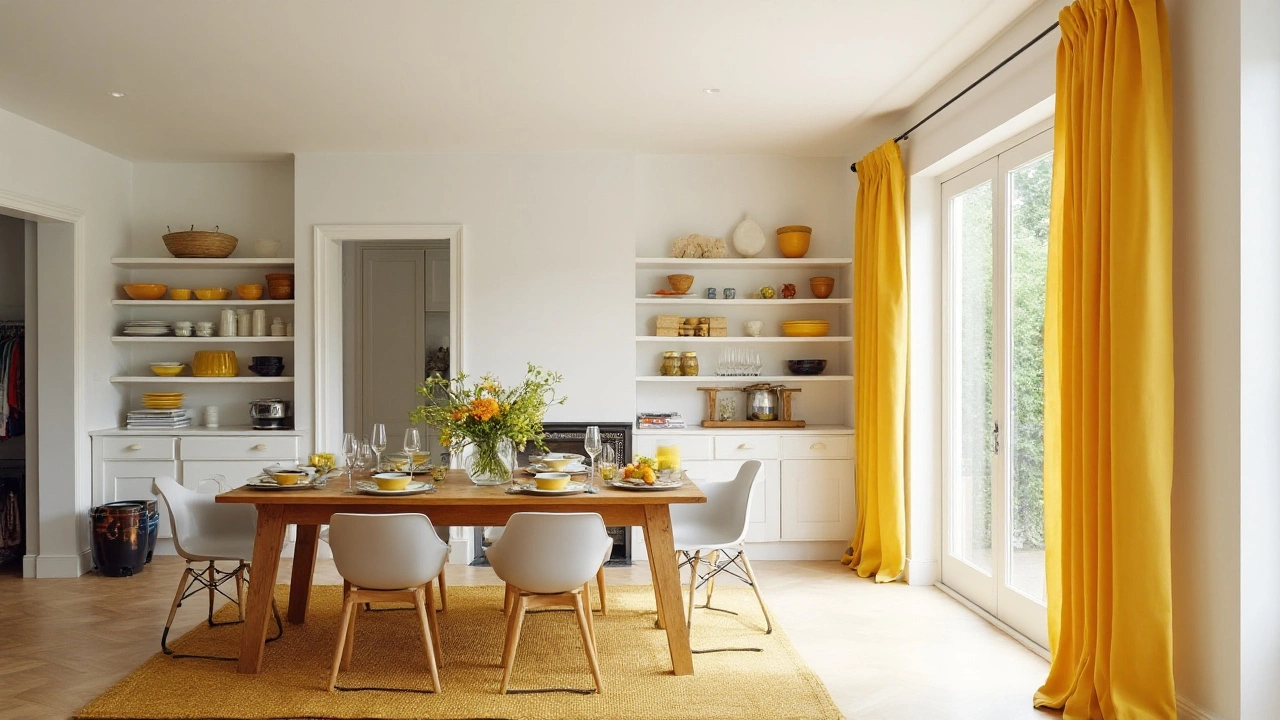
Personalizing Your Space with Unique Curtain Styles
Turning your room into a personal haven involves a creative flair, especially when considering curtain styles. With white walls as your backdrop, the opportunity to introduce curtains that speak to your unique personality expands immensely. Think of curtains as not just functional components but as statement pieces that can pull together the entire room decor. Choosing a distinctive curtain style can define the atmosphere, whether you yearn for a minimalist urban vibe or a vintage country charm. The choices begin with exploring the varied textures and materials available, each casting different shadow plays and light reflections, creating that cozy nook or that luminous sanctuary.
Exploring Textures and Fabrics
The texture of your chosen curtain can dramatically alter the visual and tactile experience of your space. Consider the elegance of velvet or brocade, which offer a touch of luxury and warmth, ideal for those cold months. If you're after a more casual feel, opt for light linens, which bring about a breezy, sunlit atmosphere. Current market trends also show a resurgence of natural fabrics, with eco-conscious consumers preferring organic cotton or hemp blends. These materials not only make an environmental statement but also carry a natural beauty that synthetic materials often lack. An interesting fact to note is how materials with heavier textures like velvet can also act as sound insulators, making them perfect for rooms requiring tranquility.
To widen your perspective, take a look at diverse curtain patterns and embellishments. Whether it's intricately embroidered borders or bold geometric prints, patterns can add depth and interest to the visual landscape of your room. For those keen on a minimalist theme, consider curtains with subtle textures, like a slight shimmer or tactile weave, providing an understated elegance without being overtly decorative. Some designers emphasize the versatility of mix-and-match patterns for a dynamic, layered look that feels spontaneous yet curated. Minkha Soni, a noted interior decorator, once remarked,
"A curtain should be like the jewelry of the room, accessorizing it with just the right amount of sparkle and detail without overwhelming the nucleus of the decor."
Customizing Lengths and Layering
Another exciting element in curtain design is the ability to customize the length. From floor-skimming drapery to window-length curtains, each choice brings a different vibe. Floor-length curtains often provide a more dramatic and formal appeal, while shorter, cafe-style curtains convey a playful or vintage look. Play with these lengths as needed to accentuate or minimize particular architectural details within the room. Layering curtains is also an innovative practice, combining sheer panels for diffused daylight with thicker drapes for privacy or light-blocking features at night. This dual-layered approach allows you to adapt the ambiance to your mood or functional needs effortlessly. Presenting visual interest, layering adds depth to the room and extends your color palette choices beyond a single dominating hue.
The Final Touch: Embellishments and Accessories
Don't forget the impact of the smallest embellishments, like ornate tiebacks, gilded curtain rods, or even whimsical finials at the curtain poles' ends. These accessories often are the unsung heroes of room design, bringing cohesion and elegance. They can reflect precious metals or rustic wood, and sometimes, even an endearing fabric flower. By selecting curtain rods that contrast or harmonize with your wall and curtain colors, you can achieve a balanced composition that feels both innovative and intentional. With these thoughtful touches, your room not only blends function with style but also stands as a testament to your creative exploration within your home. Investing effort into such details ensures that your curtains transcend their primary function, becoming a pivotal piece in narrating your unique home decor story.

